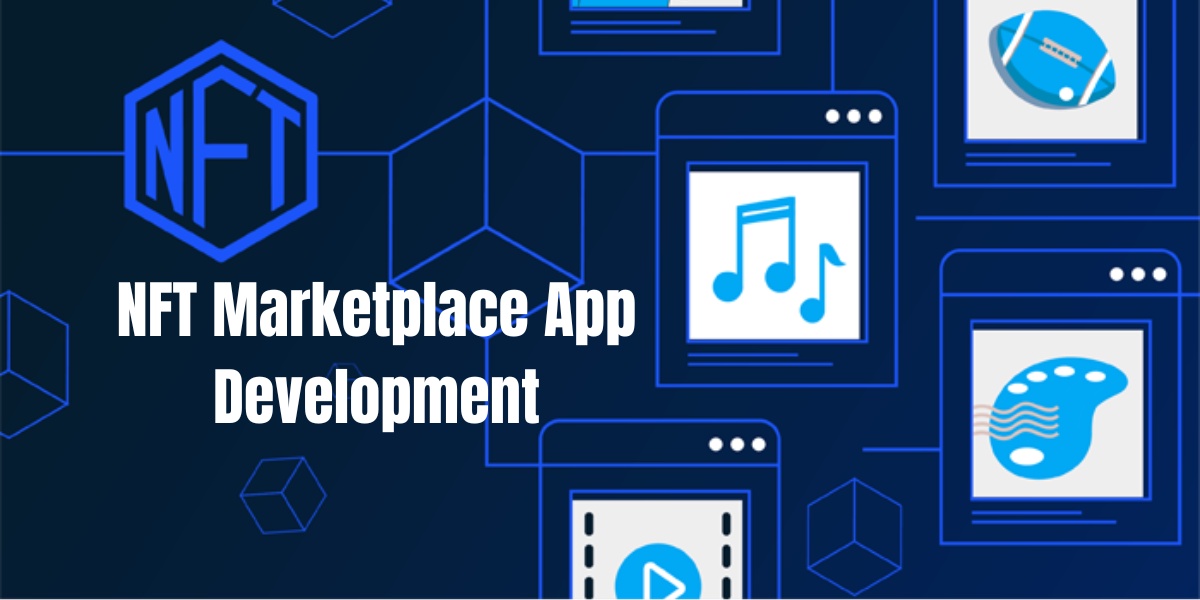In the fast-evolving landscape of digital technology, there's a term that's been making waves recently: NFTs or Non-Fungible Tokens. These unique digital assets have become synonymous with blockchain technology and are changing the way we think about ownership, art, and collectibles. But what exactly are NFTs, and how can you get started with NFT marketplace app development as a beginner? This blog will be your compass as we journey through the digital frontier of NFTs.
Understanding NFTs
First things first, let's demystify the acronym. NFT stands for Non-Fungible Token. Unlike cryptocurrencies like Bitcoin or Ethereum, which are fungible and interchangeable with one another, NFTs are unique and cannot be exchanged on a one-to-one basis. Each NFT represents ownership of a specific digital item, whether it's digital art, music, virtual real estate, in-game items, or even tweets.
The Technology Behind NFTs
NFTs are built on blockchain technology, which is a distributed ledger that records transactions across a network of computers. This technology ensures the scarcity, provenance, and authenticity of NFTs. Ethereum, one of the most popular blockchain platforms, is the primary choice for NFT development due to its robust smart contract capabilities.
Building Your NFT Marketplace App
Now that you have a basic understanding of NFTs, let's explore the steps to create your own NFT marketplace app:
- Define Your Niche:
- Decide what type of digital assets your marketplace will focus on. It could be art, music, collectibles, or something entirely unique.
- Legal and Regulatory Compliance:
- Ensure that you comply with relevant laws and regulations, such as copyright and intellectual property rights. NFTs may represent ownership, but they do not always confer copyright or intellectual property rights.
- Development Team:
- As a beginner, consider hiring experienced blockchain developers or partnering with a development agency specializing in NFT marketplace apps. The expertise of your development team will play a significant role in the success of your project.
- Smart Contracts:
- Create smart contracts to represent NFTs. These contracts define the rules of ownership and transfer of digital assets within your marketplace. They should include features for minting NFTs, transferring ownership, and managing royalties for creators.
- User-Friendly Interface:
- Design an intuitive user interface for your app. A seamless user experience is crucial for attracting and retaining users. Users should be able to easily browse, buy, and sell NFTs on your platform.
- Wallet Integration:
- Integrate cryptocurrency wallets to allow users to securely store and manage their NFTs. Wallets are essential for users to interact with NFTs, as they store the private keys necessary to prove ownership.
- Testing and Security:
- Rigorously test your app for vulnerabilities and security flaws. Security is paramount in the world of blockchain, as any vulnerabilities can lead to the loss of valuable NFTs or sensitive user data. Consider conducting third-party security audits to ensure the safety of your platform.
- Launch and Marketing:
- Launch your NFT marketplace app and create a marketing strategy to attract users and creators. Building a user base is critical to the success of your platform. Consider partnerships with artists, influencers, and collectors to generate initial interest.
- Community Building:
- Foster a strong community around your platform. Engage with users through social media, forums, and online events. Communities can help drive user engagement and loyalty.
- Stay Informed:
- Keep up-to-date with the latest trends and developments in the NFT space. Adapt your platform as needed to remain competitive. The NFT landscape is evolving rapidly, and staying informed will help you make informed decisions about the direction of your platform.
Challenges and Opportunities
While the NFT space is filled with opportunities, it also comes with challenges. Here are some of the key challenges and opportunities you may encounter:
- Scalability: Blockchain networks, including Ethereum, face challenges related to scalability. As the popularity of NFTs grows, so does the need for faster and more efficient blockchain solutions. You might explore Layer 2 solutions or consider alternative blockchains to address this issue.
- Environmental Concerns: The environmental impact of blockchain, particularly proof-of-work (PoW) networks like Ethereum, has raised concerns. Some developers are actively working on transitioning to more eco-friendly consensus mechanisms, such as proof-of-stake (PoS), to mitigate this issue.
- Market Saturation: The NFT market is becoming increasingly crowded, making it essential to find a unique value proposition for your platform. This could involve niche targeting, innovative features, or partnerships with renowned artists and creators.
- Legal and Regulatory Challenges: NFTs operate in a legal gray area in some jurisdictions. Stay informed about the legal requirements in your region and be prepared to adapt to changes in regulations.
Conclusion
Embarking on NFT marketplace app development as a beginner is both exciting and challenging. With a solid grasp of NFTs, a dedicated team, and a user-centered approach, you can contribute to this evolving ecosystem. Stay adaptable in the ever-changing NFT landscape, where digital assets reshape industries and empower creators. Whether you're an artist tokenizing your work or a developer crafting the next big NFT marketplace, this dynamic digital frontier is yours to explore. Arm yourself with knowledge, connect with a supportive community, and let your creativity thrive. Your adventure begins now. Happy developing!


No comments yet